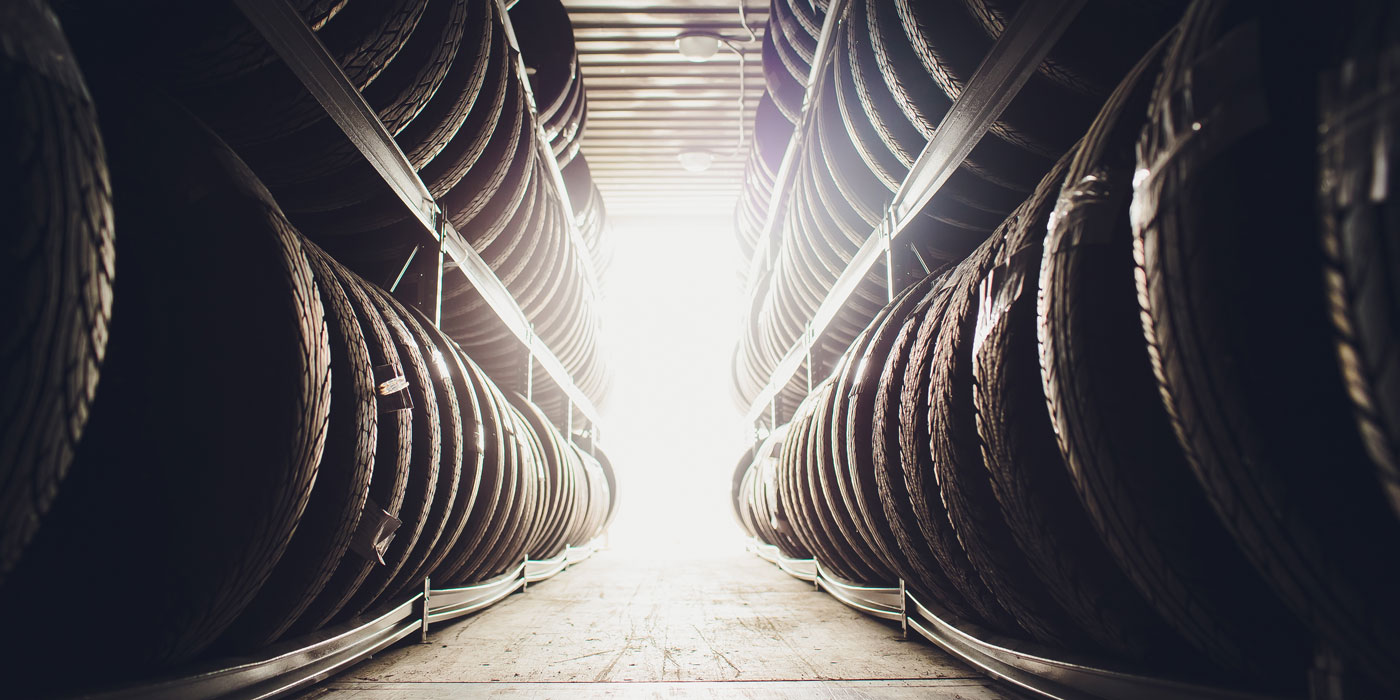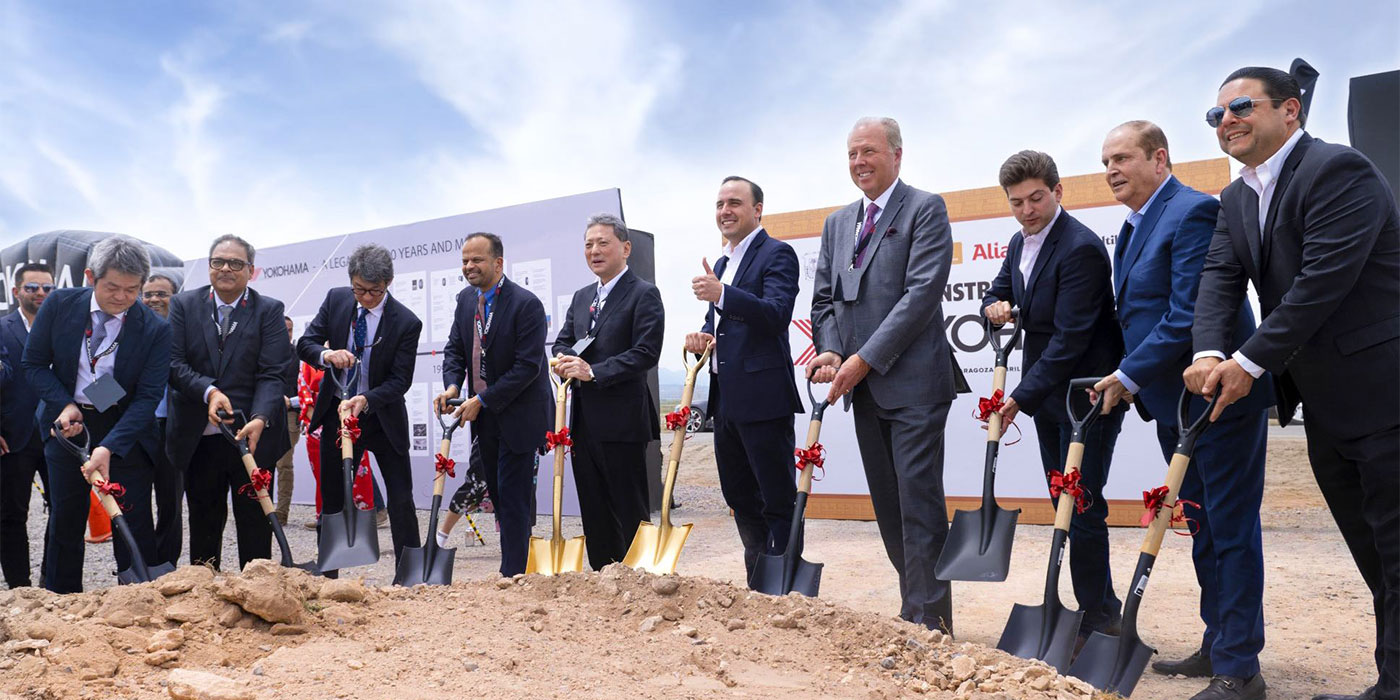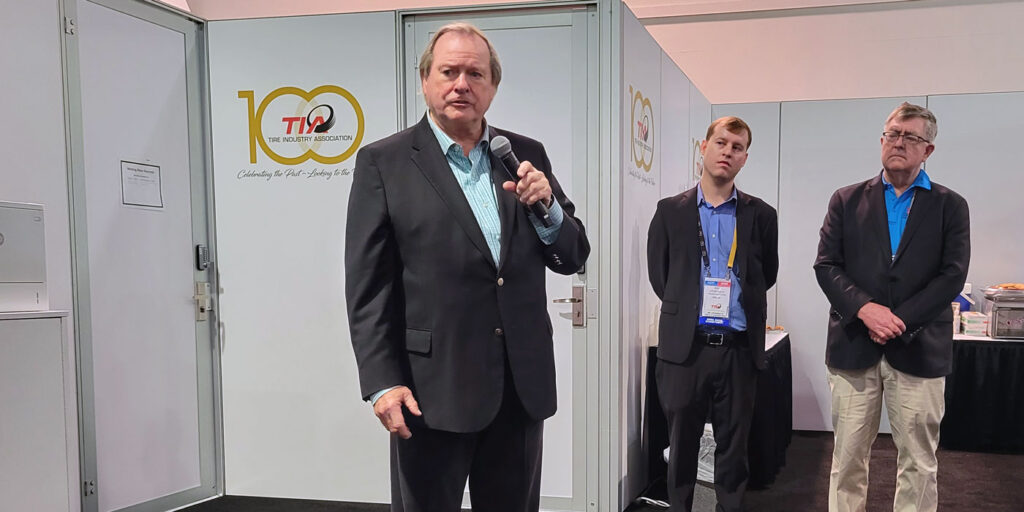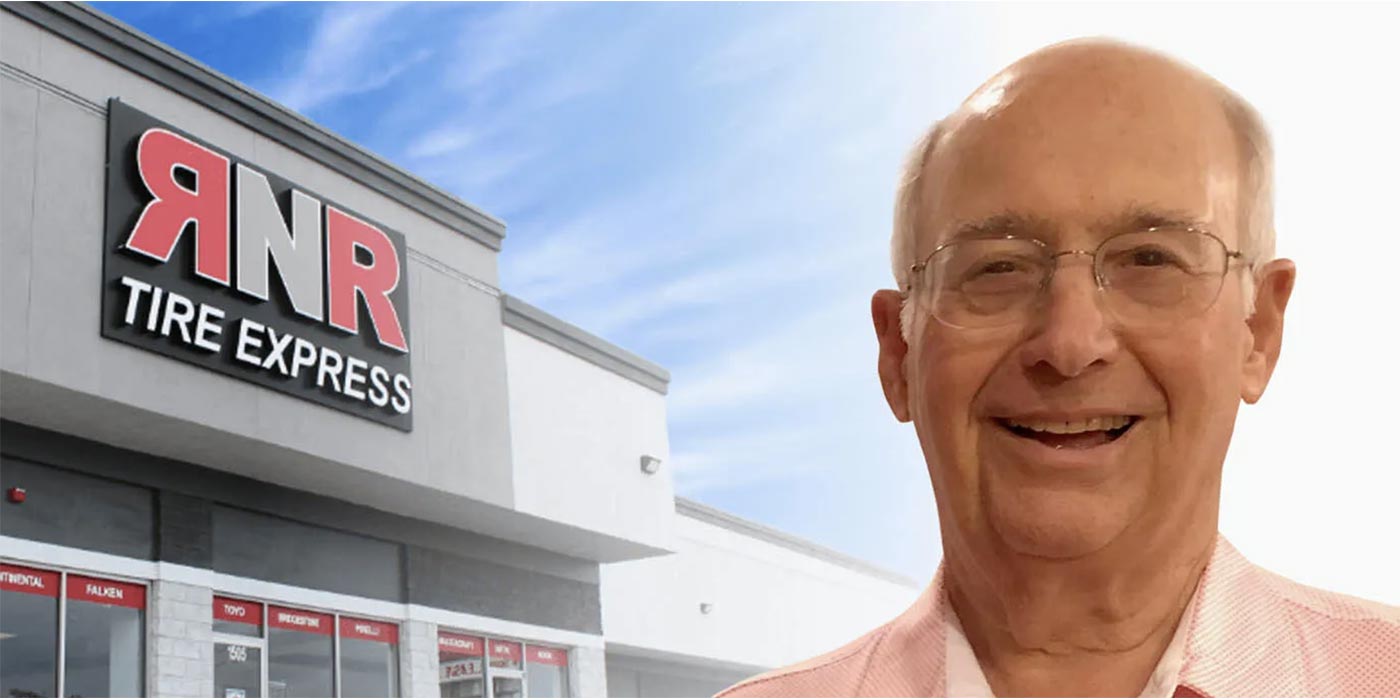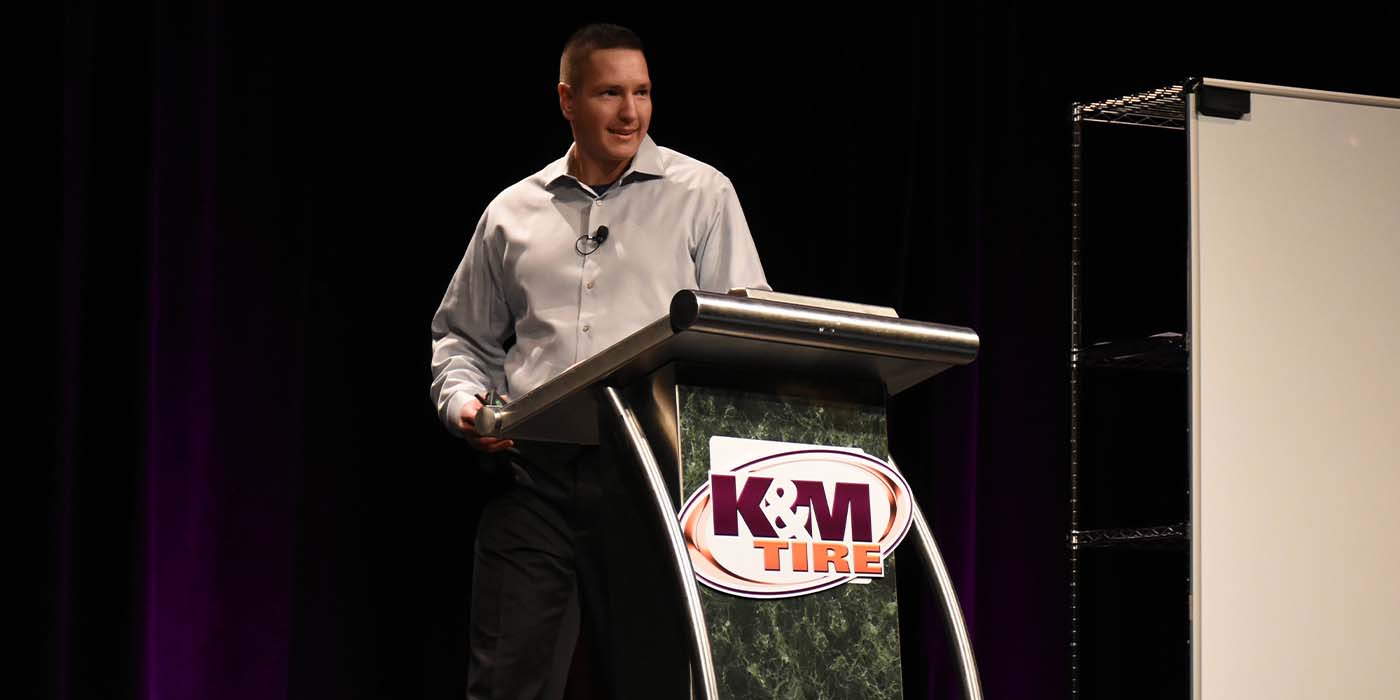Most of what has been written about the startling growth of the tire market in China has been done from a distance. Only recently have American journalists been in China to learn about the market directly from key players there and see a Chinese tire plant first hand.
We visited Shanghai last October to attend Michelin’s annual Challenge Bibendum event (Tire Review was the only North American tire magazine invited.) and had the opportunity to meet with experts on the Chinese industry, including Eric Jugier, chairman of Michelin (China) Investment Co. And, we toured the Shanghai Michelin Warrior Tyre Co. (SMWT) plant.
As they say, the tire market in China is as complex and confusing as you’ve read – and considerably more. But it is interesting to see a major market as it grows from infancy to maturity, a fast track that often strains the system.
Whereas the North American and European tire markets were able to grow their tire technology and distribution systems slowly over decades, China is compressing its growth curve into a handful of years. Complicating things is a simple fact of business in China: What works elsewhere in the world won’t work in China.
While China’s tire market has come a long way in a few years, a lack of experience with capitalism, often opposing government goals and the controlled growth of its automobile industry have held it back. Still, experts agree, China will soon become the world’s largest tire market – and it will get there faster than many assume.
As it stands today, China is still a mish-mash of large tire manufacturers, small mom-and-pop tire producers and an equally varied group of distributors.
While most experts agree that there are around 300 known tire-producing companies in China, there may well be 1,000 such companies, if one considers all the small outfits that dot the millions of square miles of rural China. These diminutive tiremakers, with their old equipment and molds, produce small batches of bias-ply tires for local farmers. How many exist? No one really knows for sure.
The state wants to improve the technology of tires produced by Chinese makers. While China has no technical standards of its own, it has leveraged joint ventures and forced technology sharing to build the knowledge base of its largest, strongest companies. Hoping to use regulations to advance technology further, Beijing recently mandated that only radial passenger tires could be produced in China. Bias ply truck tires have been spared, for now.
Even though the Chinese government won’t be scouring the countryside hunting down tiny bias tire shops, broadening distribution by major makers and the government’s technology thrust surely will shut down hundreds of the micro-makers. And that flies in face of the government’s desire to preserve jobs.
Western Influence
At this time, tire distribution in China is wholly dependent on thousands of independent businesses. The majority of them are small, storefront outfits that are horribly short on training and equipment. Few have changers or balancers, and fewer still have actual service bays. Tire sales are often made based on what the dealer has on hand, not what size or type tire the owner actually needs. With no equipment, shops roll out small hand jacks to change tires right in the street. If no changer is available, pry bars are employed. Balancing? Not really.
Market forces, though, are hastening the advance of Western-style tire distribution. The Chinese have really only had access to personal cars for about five years, so the replacement market is just gearing up. To capture some of that action, car dealers, which have bright, modern facilities with extensive service operations, are adding tires to their mix.
Tiremakers, too, are bringing Western ways to Chinese tire retailing. Michelin and Bridgestone are working to establish chains of owned and/or franchised stores, pouring millions into building stores and training staff.
Better Pay Drives Growth
The Chinese have become quite Western in another fashion – consumerism. And this desire to buy has been heavily fueled by better paying jobs at all levels. More money means more disposable income, which means more discretionary spending. Cars are status symbols. Designer clothes, fine furniture and home electronics are, too. Even Wal-Mart, that bastion of retailing, has hundreds of stores in China.
China’s automotive industry provides some of the best-paying factory jobs in the country. At the SMWT plant, for instance, hourly workers earn $4,000 and $5,000 per year – middle class money in China, and as much as 50% more than those earning the typical factory wage.
The expansive plant employs 2,200 hourly workers, and 300 administrative and technical staff. The facility includes an R&D center and an Industrial Competency Centre, in which ex-patriots train and nurture locals to assume greater responsibility for SMWT operations. Michelin wants the plant to be eventually managed and run by locals.
Gary Scheide, formerly manager of Michelin’s plant in Ardmore, Okla., heads up the SMWT facility.
Inside the Plant
In 2001, Michelin spent $200 million for a 70% share in the joint venture with Shanghai Tire & Rubber Co., with most of the funds going into major upgrades to what is now SMWT. Michelin has 100% control of the plant, which opened in 1992, and brought in staff from all over the world to retool and refocus the plant.
Clean, well lit and fairly modern, SMWT is comparable to most North American tire plants. The plant runs three shifts 24/7, with few days off during the year. Because the public power system in Shanghai is unreliable (Brownouts are not unusual.), SMWT has its own on-site power station.
All compounding and mixing is done on site, as is calendering. Overall, the plant isn’t that high-tech. Tread stock is loaded on familiar butterfly bookers, and casing plies and belts are rolled up on reels. Fabricated components meet up at a two-stage tire builder, which actually consists of two separate steps at two separate machines. Lasers help align components as they are hand placed, cut and stitched.
The curing area has an eclectic collection of 100 presses, a mixed bag of McNeil, Bag-O-Matic, Krupp and Mitsubishi units, some newer than others. SMWT produces nothing but radial Michelin, Warrior and Wynstar passenger and performance tires. Michelin says that no SMWT-made tires are shipped to North America – at least by Michelin.
Every finished tire is hand inspected, and tires for OE customers are hand trimmed. All tires are tested for uniformity, which also helps Michelin keep tabs on how well employees are doing. Random x-ray testing is also done to check belt placement.
While Jugier says the plant Michelin took control of in the joint venture was “modern,” its processes, systems and distribution were far from it. Michelin came in with a three-month “crash program,” during which it brought in a dedicated “takeover team” to install short- and long-term improvement plans.
First, Michelin cut off 90% of SMWT’s distribution customers, keeping only the best 10%. It eliminated long-term credit for customers and went to cash-up-front business with many customers. And it upped prices 8% and eliminated unprofitable lines.
Longer-term goals – such as establishing the R&D center, adding Michelin brand manufacturing, upgrading the Warrior brand in technology and quality, instilling better training for employees and customers and adding new distributors – have already been reached.
Soft Statistics
Because official statistics remain unreliable, one has to rely on other sources for data on China’s tire production. Experts say there were 133 million passenger, light truck/SUV and medium truck tires produced in China last year. Of that total, 98 million were bias and radial truck tires, and the bulk of those were surely bias ply tires.
To get a sense of China’s tire market growth, consider that, in 1990, the country produced just 16.7 million passenger, light truck/SUV and medium truck units. By 2010, say experts, China will be producing around 200 million such tires. By comparison, the U.S. produced slightly more than 316 million such tires last year.
Michelin has just a 2% overall share in the China market, according to Jugier, but in the radial replacement passenger tire segment – the smallest segment in the market – Michelin holds a 24% share, and Warrior has a 5% share.
On the radial truck/bus tire side, Warrior holds a 16% share, Jugier said, while Triangle (another native company) holds a 14% share. Michelin has just 7%. Retreading is not yet a major business in China, and how well it matures depends on a number of factors, not the least of which is new-tire quality and durability. Bias still holds the lion’s share of the market, but Michelin expects radial growth to continue until the marketshare of the two constructions converge in 2013.
The China market remains wide open, and share winners will be dictated by how quickly companies can garner production capacity, develop a solid distribution system and win the brand-awareness battle for consumers. All the major global players are in China, at varying levels, and all face the same obstacles. And there are some strong native brands that will also contend for business as the market grows.
Certainly, upcoming market battles – and how tiremakers choose to build their businesses there – will be interesting to watch.




